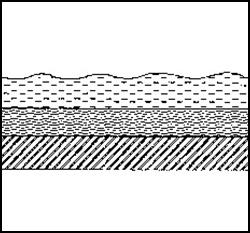Orange peel is a cosmetic defect associated with a rough surface appearance after forming a component. Chen Jane Yao Hua-Kun Liu S.

Orange Peel Industrial Metallurgists
Orange peel is a cosmetic defect associated with a rough surface appearance after forming a component from sheet metal.

. It is called orange peel because the surface has the appearance of the surface of an orange. It is typically associated with sheet metal that has undergone a large amount of deformation such as during. The diagrammatical representation of wrinkle is shown as.
Spring back can be calculated approximately in terms if radii Ri and Rf RiRf 4 Ri Y ET 3 3 Ri Y ET 1 Spring back Increases as RT ratio yield stress of material increases. During deep drawing of metallic sheet having large grain size. Orange peel is a defect associated with a rough surface appearance after forming a component from sheet metal in deep drawing.
Earing is not the only grain-related deep-drawing defect. R Stretch Strains Yield point elongation. To eliminate Earing excessive deformation in deep drawing should be avoided.
135 orange peel the surface of the rolled piece is orange peel shaped and uneven. A 2-d part is shaped into a 3-d part by. Stretch strains are usually seen in yield point elongation of ductile materials.
Grain structure should be refined before deep drawing. Centre Burst or Chevron Cracking is common defect in extrusion process. As a defect during metal casting welding.
First sand the defective area with sanding paper P1500 the area having been previously limited with masking tape in order not to invade undamaged bordering areas. If the sheet metal is having a coarse grain structure near the punch corner radius the surface will be very rough and the defect is called Orange Peeling. 14 dimensional defects 141 smaller transverse and longitudinal ribs continuous smaller phenomenon along the rolling direction.
For deep-drawn materials it is sometimes necessary to limit the amount of deformation prior to final annealing in order to avoid earing. Orange peel is a cosmetic defect associated with a rough surface appearance after forming a component from sheet metal. Orange peel can occur when drawing raw material with grains that are too coarse.
Defects in Metal Forming Springback Effect- In Bending after plastic deformation there is an elastic recovery this recovery is called spring back. An orange peel effect is observed. Some references also attribute orange peel to low current density probably a result of etching at the grain boundaries.
In manufacturing processes the main goal is to obtain defect free end product. Differences in deformation between neighboring grains result in a textured appearance that resembles an orange peel. Deep drawing is one of the most important sheet metal forming processes.
Q Orange peel large grain. Earing is also not the only grain-related deep drawing defect. It is called orange peel because the surface has the appearance of the surface of an orange.
Orange peel is a cosmetic defect most commonly found on sheet metal components after forming. During faulty heat treatment of steel. The surface requires mechanical finishing prior to electropolishing.
During extrusion of metal through a die. Earing is a defect that occurs due to uneven drawing as shown in figure. If the orange peel defect is only present on the surface of the part you should proceed as follows.
Orange peel is most often caused by stretching of the metal in drawing stamping and similar operations. The first step of manufacturing is the designing process which. Are ring prints traces orange skin or orange peel structure and Lauders strips.
S Earing Anisotropy. Scratches Heavy scratches over the drawn cup may appear due to appearance of yield point phenomenon in the material. During deep drawing the coarse grains with 100 microtexture can slip on the 112 slip system to form bulging and yields orange peel defects while the coarse grains with 112 orientation do not form the defect as the Schmid factor of 112 slip system in it equals zero.
Wrinkles are developed over the flange surface due to insufficient blank holder. Orange peel can occur when drawing raw material with grains that are too coarse. Figure-Earing due to uneven drawing and part failure 3.
Following are the defects that occur in metal during the drawing process. Guoxiu Wang Stephen Bewlay Li Yang Jiazhao Wang Y. 195-211 1981 0020-740381J040195-17502000 Printed in Great Britain.
They also extend to the surface of the cup. Cause of Orange Peel on Sheet Metal Components. Orange Peel It occurs due to coarse grain structure of the drawn material.
Each grain deforms independently and as a function of its crystallographic orientation. Orange Peel - Industrial Metallurgists. Shankar Kumar PGWLF1850156 7 8.
Sanding of the surface with P1500. This article discusses the causes of orange peel and engineering approaches for preventing it from occurring. The stress in the flange region during the deep drawing process is a.
During deep drawing the coarse grains with 100 microtexture can slip on the 112 slip system to form bulging and yields orange peelEstimated Reading Time. Defects In Deep Drawing And Their Remedies R Stretch Strains Yield point elongation. Process to solve the orange peel effect in paint.
Electron backscattered diffraction EBSD Orange peelAuthor.
Failure Analysis Of A Component With Orange Peel

Orange Peel Effect Advice On Paint Defects Glasurit

Orange Peel Industrial Metallurgists

Surface Of Deep Drawing Product Without Orange Peel Defect A And Download Scientific Diagram

Defect Of Deep Drawing Product Wrinkle A And Tear B Download Scientific Diagram


0 comments
Post a Comment